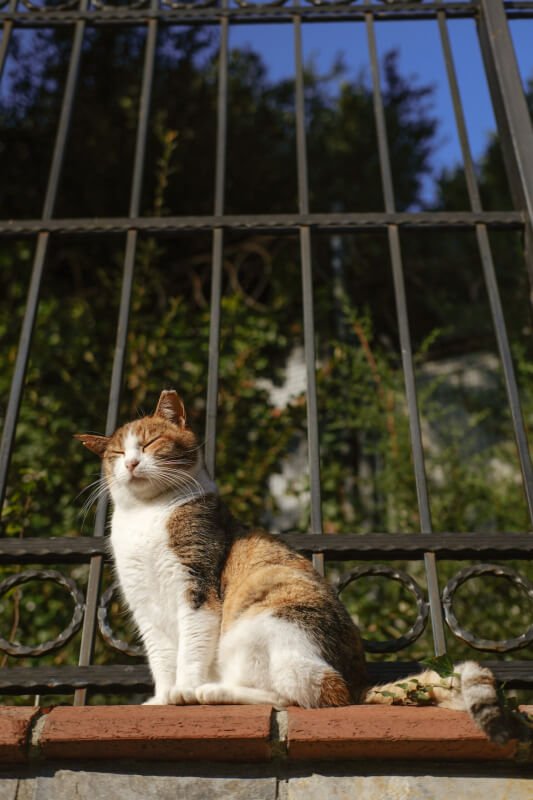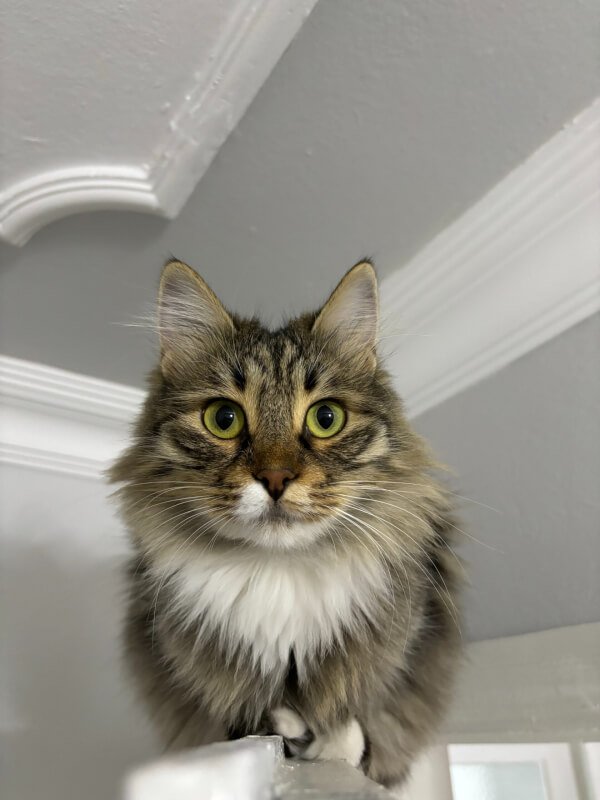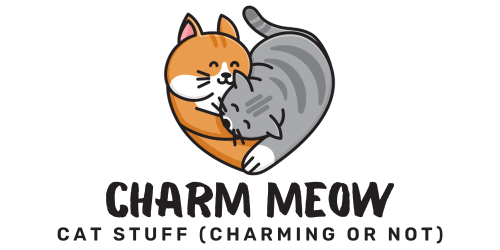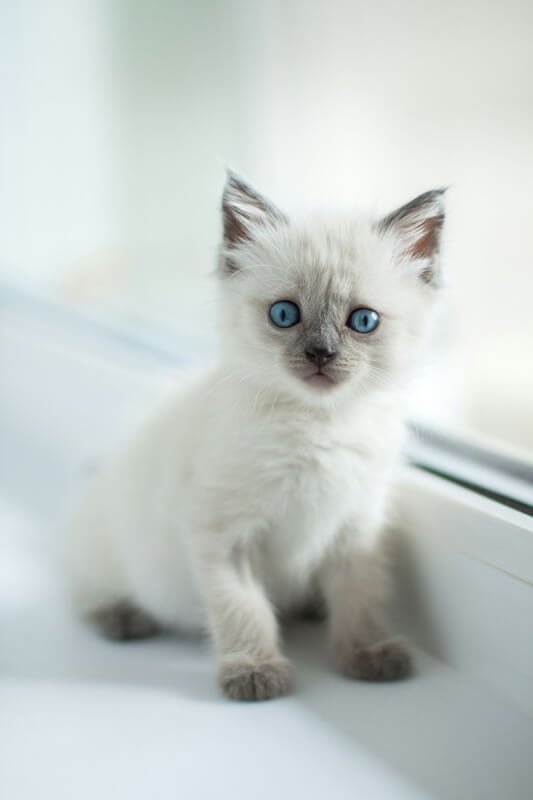If you’ve noticed your feline friend obsessively grooming herself and you’re wondering how to address this unusual behavior, you’ve come to the right place! It’s important to understand the underlying reasons behind your cat’s excessive grooming and find effective ways to manage it. In this article, we’ll explore some useful tips and techniques that can help you deal with a cat that is constantly grooming herself, ensuring she stays happy, healthy, and content. So let’s dive in and unravel the mysteries of this curious feline habit together!

Causes of Excessive Grooming in Cats
Stress and anxiety
Excessive grooming in cats is commonly associated with stress and anxiety. Cats that are feeling anxious or overwhelmed may resort to grooming as a coping mechanism. Stressful situations such as changes in the household, introduction of new pets, or unfamiliar noises can trigger excessive grooming behaviors in cats. Identifying and addressing the underlying causes of stress can help reduce excessive grooming.
Medical conditions
There are several medical conditions that can lead to excessive grooming in cats. Conditions like allergies, flea infestations, and skin infections can cause itchiness and discomfort, leading cats to groom excessively to alleviate the irritation. Additionally, underlying health issues like hormonal imbalances or pain can also contribute to excessive grooming. It is important to rule out any medical conditions through a visit to the veterinarian.
Parasites
Parasites like fleas, ticks, and mites can cause intense itching and discomfort for cats. In an effort to alleviate the itching, cats may excessively groom themselves, leading to hair loss and skin irritation. Regular use of appropriate flea and tick prevention, along with prompt treatment of any infestations, can help minimize the risk of parasites and reduce excessive grooming behavior.
Allergies
Just like humans, cats can also develop allergies. Allergic reactions to certain foods, environmental factors like dust mites or pollen, or even certain cleaning products can cause itchiness and skin irritation in cats. To relieve the discomfort, cats may excessively groom themselves. Identifying and managing any allergies through dietary changes or environmental adjustments can help alleviate excessive grooming.
Boredom
Cats are known for their natural grooming behavior, but when they become bored or lack mental stimulation, they may engage in excessive grooming as a way to occupy themselves. It is important to provide adequate mental stimulation and engage in interactive play with your cat to prevent boredom-related excessive grooming.
Identifying Excessive Grooming in Cats
Frequent and intense licking
Excessive grooming in cats often manifests as frequent and intense licking. If you notice your cat constantly licking itself, especially in specific areas such as the belly, legs, or tail, it may be a sign of excessive grooming behavior.
Hair loss
Excessive grooming can lead to noticeable hair loss in cats. Keep an eye out for patches of thinning hair or bald spots on your cat’s body. If you notice significant hair loss, it is important to determine the underlying cause and address it promptly.
Skin redness or sores
When cats excessively groom, they may cause irritation and inflammation to their skin. This can result in redness, sores, or scabs on their skin. Regularly check your cat’s skin for any signs of inflammation or discomfort.
Bald patches
Excessive grooming can lead to the development of bald patches on your cat’s body. These patches may appear as areas of complete hair loss or patches with thinning hair. If you notice any bald patches, it is important to investigate the cause and seek appropriate treatment.
Behavioral changes
Excessive grooming in cats can be accompanied by behavioral changes. Your cat may become more withdrawn, aloof, or display signs of anxiety. They may also exhibit changes in appetite or litter box habits. Monitoring your cat’s behavior can help identify excessive grooming and any underlying issues.
Excessive grooming in specific areas
One common sign of excessive grooming is the focus on specific areas of the body. Cats may excessively groom their abdomen, hind legs, or tail. If you notice your cat targeting specific areas consistently, it may be an indication of excessive grooming behavior.

Schedule a Visit to the Veterinarian
Rule out underlying medical issues
If you suspect your cat is excessively grooming, it is crucial to schedule a visit to the veterinarian. The vet will perform a thorough examination to rule out any underlying medical issues that may be causing or contributing to the excessive grooming behavior. They may also recommend further diagnostic tests if necessary.
Discuss behavioral factors
During your visit to the veterinarian, it is important to discuss any potential behavioral factors that may be contributing to the excessive grooming. Providing as much information about your cat’s environment, recent changes, or any stressful situations can help the vet understand the possible triggers for excessive grooming.
Seek professional advice
Veterinarians are well-equipped to provide advice and guidance on how to address and manage excessive grooming in cats. They may recommend specific techniques or treatments tailored to your cat’s individual needs. It is important to follow their recommendations and seek their professional advice throughout the process.
Ensure a Stress-Free Environment
Provide a safe space
Creating a safe space for your cat can help reduce stress and anxiety. Set up a designated area where your cat can retreat to when they need a quiet and secure environment. Include comfortable bedding, toys, and scratching posts to create a comforting space.
Avoid overstimulation
Cats are sensitive to their environment, and overstimulation can contribute to their stress levels. Avoid sudden loud noises, limit exposure to crowded or chaotic spaces, and provide quiet areas where your cat can relax undisturbed. Consider using noise-cancelling devices or white noise machines to create a calming atmosphere.
Create a routine
Cats thrive on routine, and having a predictable daily schedule can help reduce stress. Feed your cat at the same time each day, provide playtime and interactive sessions, and establish consistent sleep patterns. This can help your cat feel more secure and less prone to excessive grooming.
Use pheromone sprays
Pheromone sprays designed for cats can help create a calming environment. These sprays mimic the natural pheromones that cats produce and can help reduce stress and anxiety. Use them in areas where your cat spends the most time or in their safe space.
Consider environmental enrichments
Providing environmental enrichments can help stimulate your cat’s mind and alleviate boredom. Consider interactive toys, puzzle feeders, or vertical spaces like cat trees to give your cat opportunities for mental stimulation and physical exercise. Rotate toys regularly to keep their interest piqued.
Treat Underlying Medical Conditions
Follow veterinary recommendations
If your cat has been diagnosed with an underlying medical condition, it is essential to follow the veterinarian’s recommendations for treatment. Administer any prescribed medications as directed and adhere to any recommended dietary changes or grooming routines.
Administer prescribed medications
If your cat requires medication to manage an underlying condition, it is important to administer it as prescribed. Whether it is oral medication, topical treatments, or injections, make sure to follow the veterinarian’s instructions carefully to ensure the best results.
Manage allergies or skin conditions
If your cat is diagnosed with allergies or skin conditions, work closely with your veterinarian to identify the specific triggers and develop a management plan. This may involve dietary changes, allergen avoidance measures, or the use of medication to alleviate symptoms.
Regular grooming and bathing
Regular grooming and bathing can help alleviate skin irritation and remove any potential allergens from your cat’s fur. Consult with your veterinarian for guidance on grooming techniques and suitable products to use. Be gentle and patient during grooming sessions to ensure your cat’s comfort.
Minimize Parasite Infestations
Use appropriate flea and tick prevention
Preventing fleas and ticks is crucial in minimizing parasite-related excessive grooming. Consult with your veterinarian to determine the best flea and tick prevention products for your cat, and use them consistently according to the instructions. This will help prevent infestations and reduce discomfort for your cat.
Treat existing infestations
If your cat already has a flea or tick infestation, it is important to treat it promptly. Consult with your veterinarian for appropriate treatment options. Treatments may include topical medications, oral medications, or flea baths. Make sure to also address any potential infestations in your home or environment.
Maintain a clean living environment
To minimize the risk of parasite infestations, it is important to maintain a clean living environment for your cat. Regularly vacuum carpets, clean bedding, and wash your cat’s toys to remove any potential flea eggs or larvae. Keeping a clean living space can help prevent re-infestations.
Regularly wash bedding and toys
Washing your cat’s bedding and toys on a regular basis can help eliminate any potential parasites or allergens. Use hot water and pet-friendly detergents to ensure cleanliness. By regularly washing these items, you can reduce the risk of your cat ingesting or coming into contact with irritants.
Provide Adequate Mental Stimulation
Play interactive games
Engage in play sessions with your cat to provide mental stimulation. Use interactive toys such as feather wands or laser pointers to encourage your cat to chase and pounce. This can help redirect their excessive grooming behavior and keep them entertained.
Use puzzle toys or feeders
Puzzle toys or feeders can provide mental stimulation for your cat while also satisfying their natural hunting instincts. These toys require cats to work for their food, stimulating their minds and keeping them occupied. Invest in a variety of puzzle toys to keep your cat engaged.
Rotate toys regularly
Cats can quickly become bored with the same toys. To keep their interest piqued, rotate their toys regularly. Introduce new toys periodically, and pack away some of the older ones. This will provide novelty and prevent your cat from using excessive grooming as a result of boredom.
Introduce new experiences
Introducing new experiences can help stimulate your cat’s mind and prevent excessive grooming. Set up a window perch where they can observe birds or other wildlife, or create a cat-friendly outdoor enclosure where they can safely explore their surroundings. These new experiences can provide mental stimulation and reduce the need for excessive grooming.
Implement Behavioral Modification Techniques
Redirect excessive grooming behavior
Whenever you catch your cat engaging in excessive grooming, gently redirect their attention to an alternative activity. Offer a toy or engage in interactive play to distract them from grooming. Consistently redirecting their behavior can help break the habit of excessive grooming.
Offer healthy alternatives
Provide your cat with healthy alternatives to groom on. This can include designated grooming brushes or specially designed scratching posts. By providing appropriate outlets for grooming, you can redirect their excessive grooming behavior and minimize damage to their fur and skin.
Positive reinforcement
Reward your cat with praise and treats when they engage in alternative activities instead of excessive grooming. Positive reinforcement can help strengthen the desired behavior and encourage your cat to engage in healthier habits. Shower your cat with affection and positive attention to reinforce their positive choices.
Distract and engage with toys
Whenever you notice your cat displaying signs of excessive grooming, distract them with interactive toys or play sessions. Engage in activities that capture their interest and keep them mentally and physically engaged. The more you can distract and divert their attention, the less they will resort to excessive grooming.
Consult a professional animal behaviorist
If your cat’s excessive grooming persists despite your best efforts, it may be beneficial to seek the help of a professional animal behaviorist. They can provide tailored guidance and techniques to address the underlying causes of the excessive grooming and develop a behavior modification plan specific to your cat’s needs.
Maintain a Healthy Diet
Feed a balanced diet
A balanced diet is essential for your cat’s overall health and wellbeing. Make sure to feed them a high-quality cat food that meets their nutritional needs. Consult with your veterinarian to determine the appropriate diet for your cat based on their age, weight, and any underlying medical conditions.
Consider hypoallergenic options
If your cat has been diagnosed with allergies or sensitivities, consider switching to a hypoallergenic diet. These diets are formulated to minimize the risk of triggering allergic reactions and can help reduce excessive grooming caused by allergies.
Address dietary sensitivities
Some cats may have sensitivities or intolerances to certain ingredients in their food. If you suspect your cat has dietary sensitivities, work closely with your veterinarian to identify and eliminate any potential triggers. This may involve conducting food trials or switching to a specialized diet.
Provide fresh water
Ensure that your cat always has access to fresh, clean water. Hydration is important for their overall health and can contribute to the health of their skin and coat. Regularly clean and refill water bowls to encourage your cat to drink an adequate amount of water throughout the day.
Monitor the Progress
Observe changes in grooming habits
Keep a close eye on your cat’s grooming habits and monitor any changes. Note if they are reducing their excessive grooming behavior or if there are any relapses. Documenting these changes can help you assess the effectiveness of the strategies you have implemented and identify any additional areas for improvement.
Note improvements or relapses
Take note of any improvements in your cat’s excessive grooming behavior. If you observe a decrease in grooming or notice that they are engaging in healthier habits, it is a positive sign that your efforts are working. However, be prepared for the possibility of relapses and be proactive in modifying your approach if necessary.
Maintain communication with the veterinarian
Stay in regular communication with your veterinarian throughout the process. Provide them with updates on your cat’s progress and any changes you have noticed. They can offer guidance, adjust treatment plans if needed, and provide ongoing support as you work to address the issue of excessive grooming.
Adjust strategies accordingly
If the excessive grooming behavior persists or worsens despite your efforts, it may be necessary to reevaluate and adjust your strategies. Work closely with your veterinarian and, if necessary, consult with a professional behaviorist for additional guidance. Every cat is unique, and finding the right approach may require some trial and error. Stay patient and persistent as you work towards a solution that benefits your cat’s overall wellbeing.


